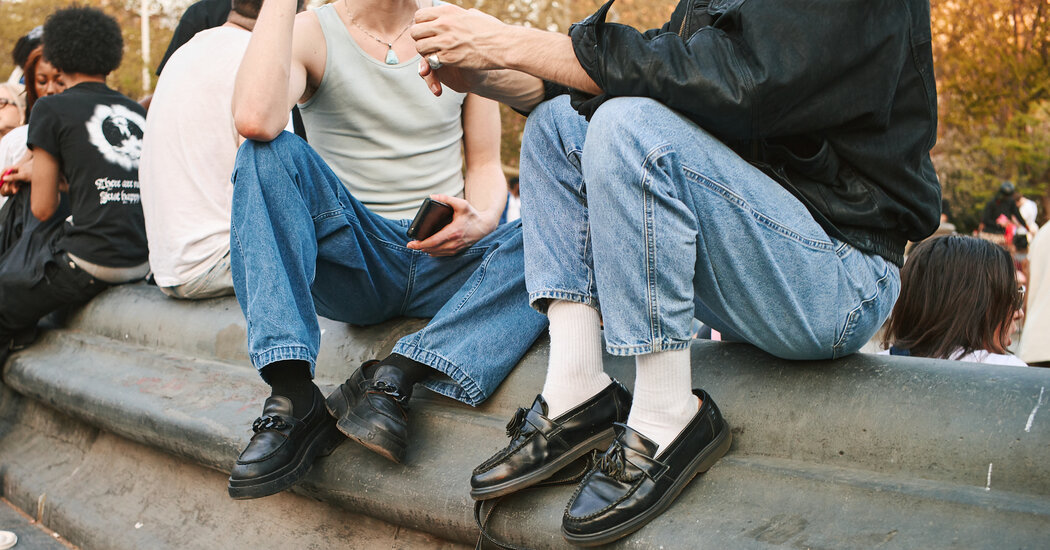Why are men given so many more size options than women, especially when it comes to pants? They come in a wide variety of lengths, but women just grow up to be small, normal, and tall, even though there are as many different sizes for women as there are for men. Please explain. – Amy, Hunterdon County, NJ
The question of sizing for men and women is a much more complicated question than it seems, partly because the entire concept of sizing is not standardized. In fact, it is so fungible that it would send Hamlet around the bend.
Taking the Gap as an example, men’s pants are generally tailored according to inseam and waist, resulting in four possible lengths (28-34) and multiple waist sizes; Women’s trousers are available in sizes 00-20 and three lengths: long, regular and cropped/petite. At Brooks Brothers, men’s chinos are offered in three inseam lengths, while women’s chinos are simply available in sizes 0-16.
It’s also true that some brands offer men’s and women’s pants in standard ready-to-wear sizes, and most major denim labels offer men’s and women’s jeans based on waist and inseam.
So while it seems like men have a lot more sizing options than women, and that may seem like obvious latent sexism (kind of like the fact that most men’s clothing has functional pockets, and most women’s clothing doesn’t), there’s a bigger problem at work. And that has to do with history, self-image, social beauty standards, consumer psychology and the sheer ridiculousness of the current standard.
As Carla Sozzani, the founder of 10 Corso Como, the concept store in Milan, and a retailer who has been buying women’s and men’s clothing for decades, said, the sizing of “pants is rooted in cultural shifts.”
Simply put, even though women had forced to wear trousers for centuriesand the cries became especially loud during the women’s rights movement of the 1850s (enter Amelia Bloomer) – and despite the fact that Coco Chanel made trousers a part of her wardrobe in the early 20th century, and movie stars and working women wore them with enthusiasm adopted in the 1930s and 1940s, trousers did not become part of the everyday woman’s wardrobe until the 1960s.
This meant that women’s trousers came into circulation around the same time as ready-to-wear as we know it today. That means that, unlike men’s clothing, which emerged from the sartorial tradition of measuring trousers based on waist and inseam, women’s trousers were incorporated into the trend of standardized sizes – what we now know as 2, 4, 8, 12, etc.
But as anyone who has tried to make a comparison can attest, when it comes to women’s sizing, those numbers are more of a concept than reality. They can vary widely from brand to brand, largely because there are so many social prejudices surrounding body size, and conventional wisdom says that brands will move more products if they make consumers feel smaller than they actually are.
As Janice Wang, the CEO of Alvanon, a Hong Kong company that uses technology to update fit patterns to suit today’s body types, once told me: “Women’s sizing is arbitrary. The range varies depending on a brand’s age group, the lifestyle tribes the brand is targeting, and the designer’s silhouettes.”
In a study titled “Sized Out: women, clothing size and inequality,” academics Katelynn Bishop, Kjerstin Gruys, and Maddie Evans went so far as to call clothing size a “floating signifier.”
Although this absurdity is most visible in women’s fashion, it is also present in men’s clothing, a phenomenon that too “manity” sizing. If you talked to professional basketball players, they would tell you that no brand makes pants long enough for their tastes.
All of this suggests that, whatever your gender identity, there is only one real answer to finding the best-fitting pants: Free yourself from the constraints of size and simply try them on until you find a pair that fits you well. If you can, have them custom made to your own specifications. Then when someone asks what size they are, you can just say: mine.
Your style questions, answered
Every week on Open Thread, Vanessa answers a reader’s fashion-related question, which you can send to her at any time e-mail or Tweet. Questions are edited and condensed.





